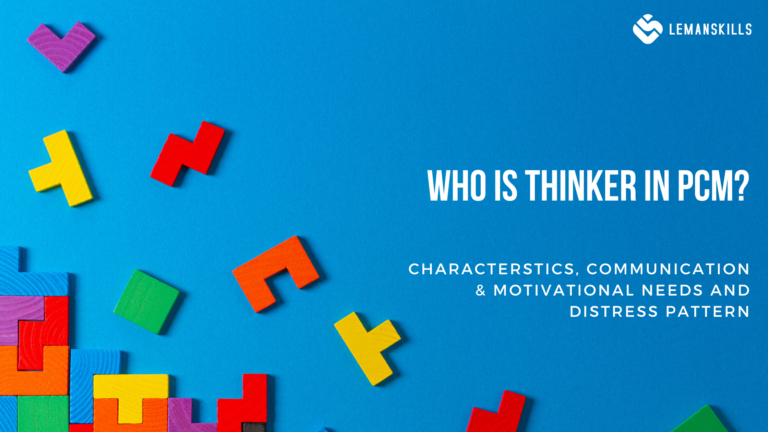
Work Drama Triangle (and How to Escape It)
The Drama Triangle is a psychological and social model of human interaction that highlights dysfunctional dynamics often seen in relationships, workplaces, and personal lives. Created by Stephen Karpman in 1968, this model identifies three primary roles people unconsciously adopt: the Victim, the Persecutor, and the Rescuer. While these roles may feel familiar and even comforting in the moment, they often lead to unproductive behaviors and strained relationships. By understanding the Drama Triangle and replacing it with healthier patterns like the Winning Triangle, we can transform our interactions and create more positive outcomes. And strengthen our muscle of Communication Intelligence (CQ). Let’s dig deeper into the subject today so you can understand better your behavior patterns with a practical solutions on how to get out of it. The Story of the Drama Triangle Stephen Karpman, a student of transactional analysis, developed the Drama Triangle to illustrate how people can become trapped in unhealthy relational patterns. These roles are not fixed, and individuals may shift between them during a single interaction. The triangle often begins with one person adopting a role, which triggers complementary roles in others, creating a cycle of blame, helplessness, and over-involvement. Let’s explore these roles in detail: The Victim The Victim feels powerless, overwhelmed, and unable to take responsibility for their situation. This role is characterized by self-pity and an underlying belief that “I can’t do it” or “Life is unfair.” Behaviors: Avoidance of responsibility, learned helplessness, seeking sympathy. Typical Sentences: – “Why does this always happen to me?” – “I can’t handle this.” – “No one understands how hard this is for me.” Position in the OK-OK Matrix: The Victim operates from an “I’m not OK, you’re OK” position, perceiving themselves as inferior or incapable compared to others. The Persecutor The Persecutor blames and criticizes others to maintain control or assert dominance. They often feel justified in their actions but lack empathy for others. Behaviors: Aggression, fault-finding, micromanaging. Typical Sentences: – “This is all your fault.” – “You never do anything right.” – “If you had just listened to me, we wouldn’t be in this mess.” Position in the OK-OK Matrix: The Persecutor operates from an “I’m OK, you’re not OK” position, seeing themselves as superior while devaluing others. The Rescuer The Rescuer intervenes excessively to “save” others, often neglecting their own needs. While their actions may appear helpful, they can enable Victims to remain passive and dependent. Behaviors: Overhelping, unsolicited advice-giving, neglecting self-care. Typical Sentences: – “Let me fix this for you.” – “You can’t do this without me.” – “Don’t worry; I’ll handle everything.” Position in the OK-OK Matrix: The Rescuer operates from an “I’m OK, you’re not OK” position but masks it with seemingly altruistic behavior. What Is the Cost of the Drama Triangle at Work? When workplace interactions are led by the Drama Triangle, several negative outcomes emerge: – Decreased Productivity: Time and energy are wasted on blame-shifting or rescuing instead of solving problems collaboratively. – Eroded Trust: Dysfunctional dynamics create resentment and reduce psychological safety among team members. – Stagnation: Victims avoid growth opportunities, Persecutors stifle creativity through criticism, and Rescuers prevent others from developing autonomy. – Burnout: Rescuers often overextend themselves, while Victims feel perpetually overwhelmed and Persecutors experience frustration from unmet expectations. In essence, the Drama Triangle traps individuals in cycles of conflict and inefficiency, undermining both individual well-being and organizational success. The Winning Triangle: A Healthier Alternative To break free from the Drama Triangle, Acey Choy introduced the Winning Triangle as a model for healthier interactions. This framework replaces the dysfunctional roles of Victim, Persecutor, and Rescuer with three constructive counterparts: Vulnerable, Assertive, and Caring/Coaching. These roles empower individuals to take responsibility for themselves while keeping respect and collaboration with others. And to operate from OK-OK position that gives us a chance to use all of our skills and growth mindset. Vulnerable (Replacing the Victim) Vulnerability involves acknowledging one’s feelings and needs without going into the realm of helplessness. It requires self-awareness and a willingness to seek support constructively. What can you do? – Admit when you’re struggling but frame it as an opportunity for growth. – Ask for help without expecting others to solve everything for you. – Use “I” statements to express your needs clearly. How can you say it? – “I’m feeling overwhelmed; can we brainstorm solutions together?” – “I need some support with this task—could you guide me through it?” Vulnerability fosters authenticity and encourages open communication. It creates an environment where challenges are addressed collaboratively rather than avoided. It’s healthier, creating a space to grow, make mistakes and learn from them, as well as using the experience and wisdom of others’. Assertive (Replacing the Persecutor) Assertiveness involves expressing one’s thoughts and boundaries respectfully while considering others’ perspectives. It balances confidence with empathy. What can you do? – Provide constructive feedback rather than criticism. – Set boundaries clearly but kindly. – Focus on solutions instead of assigning blame. How can you say it? – “I noticed an issue with this report; let’s discuss how we can improve it.” – “I value your input, but I need some time to focus on my own tasks right now.” Assertiveness promotes accountability and problem-solving without alienating others. It helps create a culture of respect and mutual understanding, without treating people like worse or stupid. It’s creating a chance for everybody to take their own responsibility for what they do at work. Caring (Replacing the Rescuer) Caring involves offering support without overstepping boundaries or fostering dependency. It respects others’ autonomy while providing encouragement. What can you do? – Offer help only when it’s needed or requested. – Encourage others to take ownership of their responsibilities. – Practice active listening without immediately jumping in with solutions. How can you say it? – “How can I support you in resolving this issue?” – “You’ve got this—I’m here if you need guidance.” Caring builds trust and empowers

